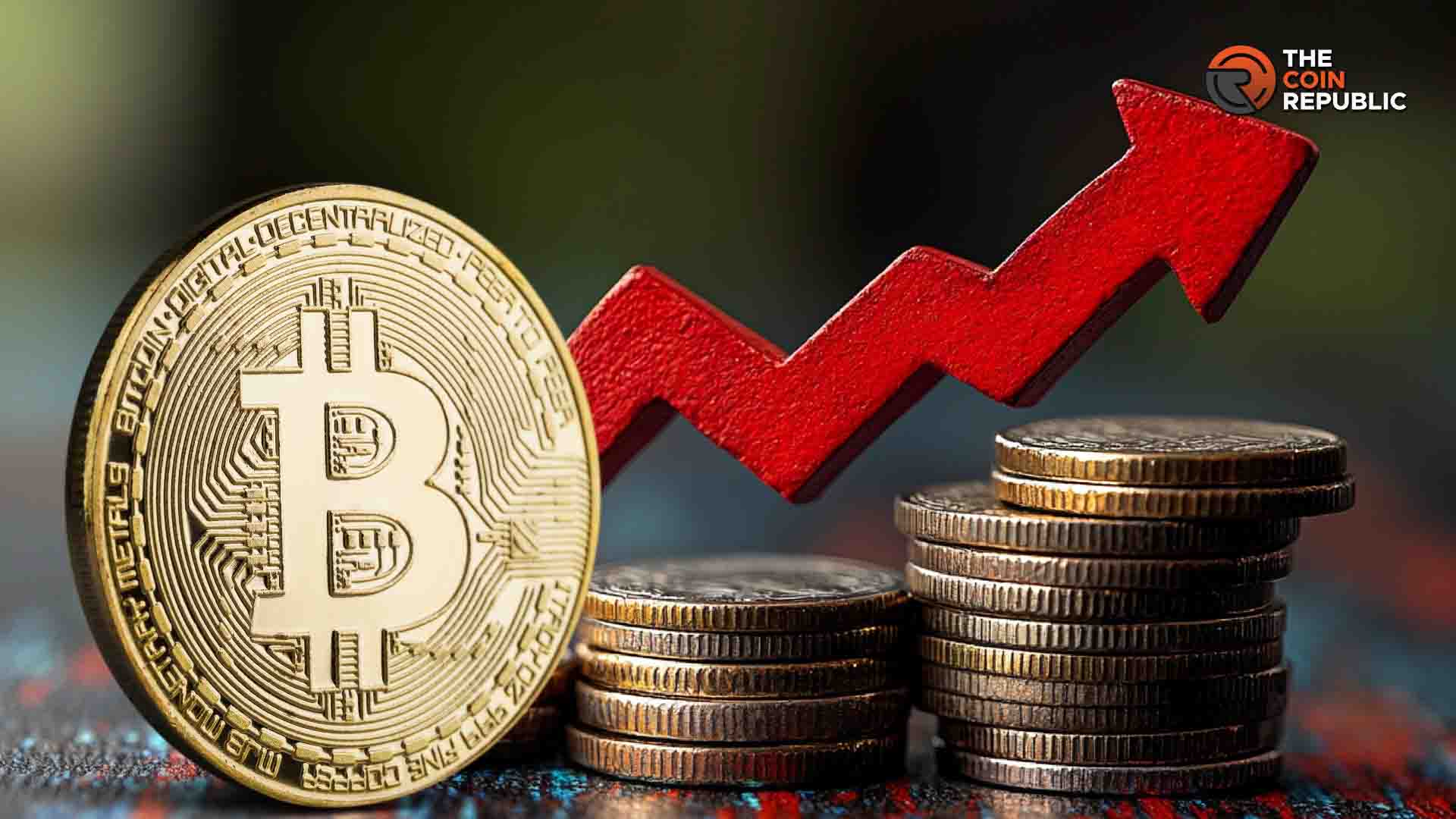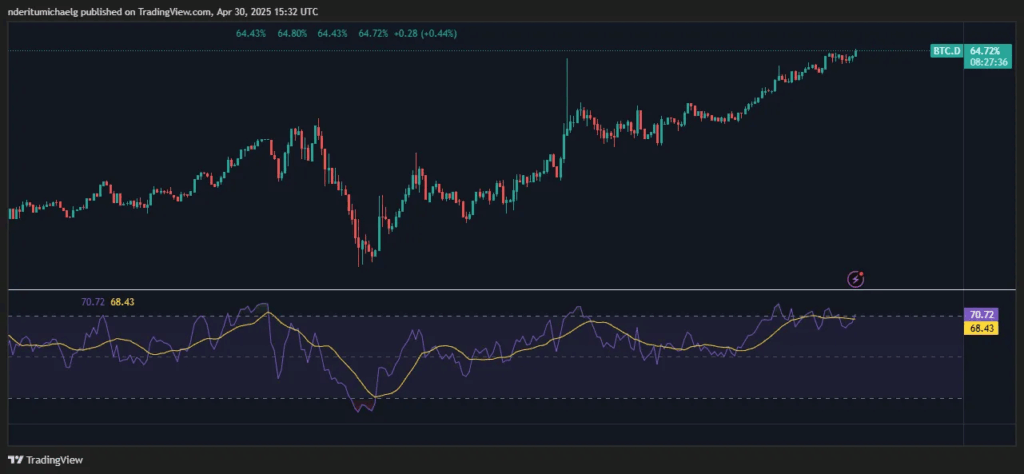
It is hard not to think about how the price of Bitcoin will respond to the next major economic disruption. Especially after the markets hemorrhage that occurred due to tariff war escalations.
The price of Bitcoin still held on to a 25% plus premium from its bottom range in April. However, recent data suggests that the next major narrative could be the risk of inflation.
According to recent reports, GDP figures in the first quarter of 2025 pointed towards negative economic growth for the first time in more than 2 years. As a result, the probability of a recession surged to 74%.
Interestingly, the price of Bitcoin appeared to be hovering within the same price range. An outcome that is consistent with growing market uncertainty, perhaps in regards to the potential risks that underscore a recession.
Recession risks may force the Federal Reserve to slash rates in an attempt to stimulate the economy. Such an outcome could potentially lead to higher liquidity inflows for Bitcoin.
Bitcoin dominance soars to new highs amid ballooning M2 money supply
Bitcoin dominance has been ticking higher since December, indicating that most of the attention in the crypto market was shifting back to BTC. This also means the cryptocurrency has been receiving the lion’s share of liquidity flowing into the crypto market.

Bitcoin dominance pushed as high as 64.80% in the last 24 hours, which marked a new ATH. This is an important observation especially now because more liquidity has already been flowing into the market.
Interestingly, the U.S M2 money supply has been ticking higher and also recently pushed to a new ATH at $21.76 trillion. This signaled that more liquidity was flowing into the markets and Bitcoin was in a position to take advantage.
The surging Bitcoin dominance and M2 money supply coincide with the sharp decline that Bitcoin demonstrated in its supply on exchanges. This suggests that Bitcoin could be headed for another supply shock and volatile price movements in the coming days.
Bitcoin price action in May could thus turn out to be interesting as the above factors align with surging demand.
Coinbase records massive spike in Bitcoin outflows
Still on the subject of demand, recent market analysis revealed a major purchase through which 8,000 BTC exited the Coinbase exchange and onto a private wallet. This occurred on 29 April and was not the only trade of its kind observed recently.
A similar trade was observed 5 days prior, during which a similar amount of BTC was observed to exit the exchange. Why is this important? It reflects recent large purchases that underscore massive Bitcoin buys that align with the surging demand.
While those purchases may not have had an impact on price, they may have been aimed at shielding BTC from more downside. Nevertheless, they are among the multiple large trades that occurred recently, in line with improved market sentiment.
BTC’s strong position above $90,000 has also been heavily supported by robust institutional activity. For context, Bitcoin ETFs have so far acquired about $3.8 billion since 21 April.
The strong demand was in line with the improving market conditions but there was a major aspect of demand to consider. As the markets recover, the rising risks of a recession have been pushing Bitcoin closer to a safe haven status.
The logic behind Bitcoin possibly becoming one of the go-to assets is largely driven by concerns over recent economic pressure and their impact on currencies. For example, the latest economic headwinds resulted in a weaker dollar and this may trigger liquidity flows into BTC.
The post Bitcoin Price Action Amid Rising Inflation Risk appeared first on The Coin Republic.
